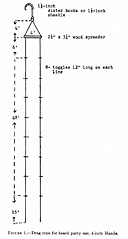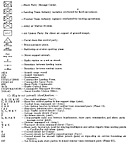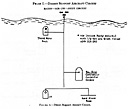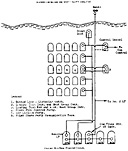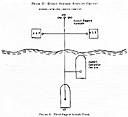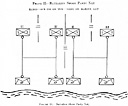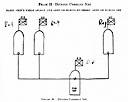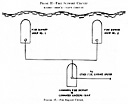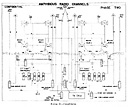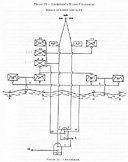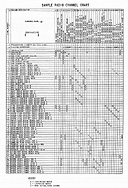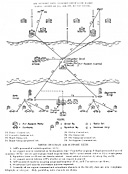Communication officer.--Army or Marine line officer in regiments and battalions assigned
signal communication specialty; or, Navy officer in charge of all visual and radio communications
for a ship, unit, task group or force.
Control vessel.--Vessel to guide and assist boat traffic.
Demonstration group.--Vessels assigned the task of making demonstration outside the
designated landing area.
Direct support aircraft.--Aircraft (carrier or land based) of the air group designated in close
support of ground forces.
Fire support group.--Combatant vessels designated to support landing and subsequent
operations by gunfire missions.
Guide flags.--Visual markers to aid navigation.
Guide plane.--Aircraft designated to assist in navigation of boat groups.
Gunnery observation spotting plane.--Aircraft to observe and direct naval gunfire.
Headquarters ship.--Vessel (preferably noncombatant) from which task, naval, landing, and
air commanders exercise control in landing operations.
Joint shore party communications team.--Army/Marine and Navy detachments to establish
communications seaward, landward, and laterally in support of a landing.
Landing area.--Air, ground, and sea areas involved in an amphibious operation.
Landing force.--Military organization to execute landing operations from the transports
of a task force.
Landing team.--Reinforced infantry battalion to assault a hostile shore.
Line of departure.--Coordinating line at sea suitably marked to assist the various waves
to land on designated beaches at the proper time.
Military.--Army and/or Marine.
Mine group.--Vessels designated for mine sweeping and mine laying.
Naval force.--Naval organization for landing operations.
Naval support area.--Sea area assigned combatant naval support vessels.
Opposite numbers.--Military and naval officers of similar command and staff assignment.
Reconnaissance group.--Vessels designated to reconnoiter a landing area preliminary
to the landing.
Screening group.--Vessels designated to protect the naval force.
Salvage group.--Vessels designated to rescue personnel, equipment and matériel.
Shore fire control party.--Naval and artillery liaison party with signal communication
personnel, supporting a landing team.
Shore party.--Special military detachment to organize logistic operations on the beach.
Signal communications.--Comprise all methods and means employed to transmit messages
and telephone conversations. Messages include all written official messages, reports and
instructions.
Signal officer.--Army/Marine staff officer of large units (division, higher or equivalent)
specializing in signal communications; Navy officer in charge of visual communications for a
ship or flag officers staff.
SOP.--Standing operating procedure. (Naval use defines SOP as "Senior Officer Present".)
SOI.--Signal operation instructions.
Task force.--Joint overseas expedition for operation against an hostile shore.
Task group.--Subdivision of a task force.
Transport vessel.--AP.
Transport area.--Water area assigned for debarking troops from the transports.
Transport division.--Vessels designated to transport one combat team.

